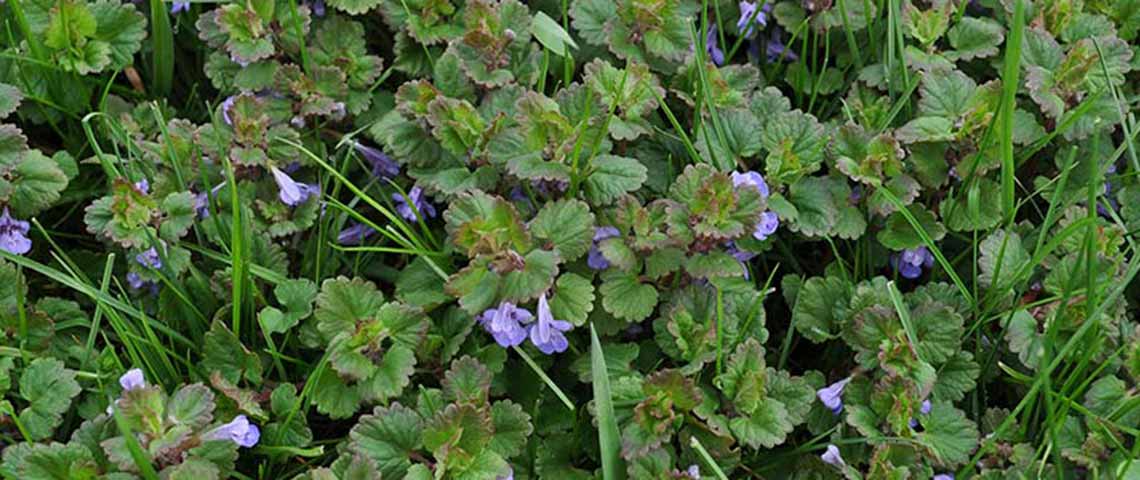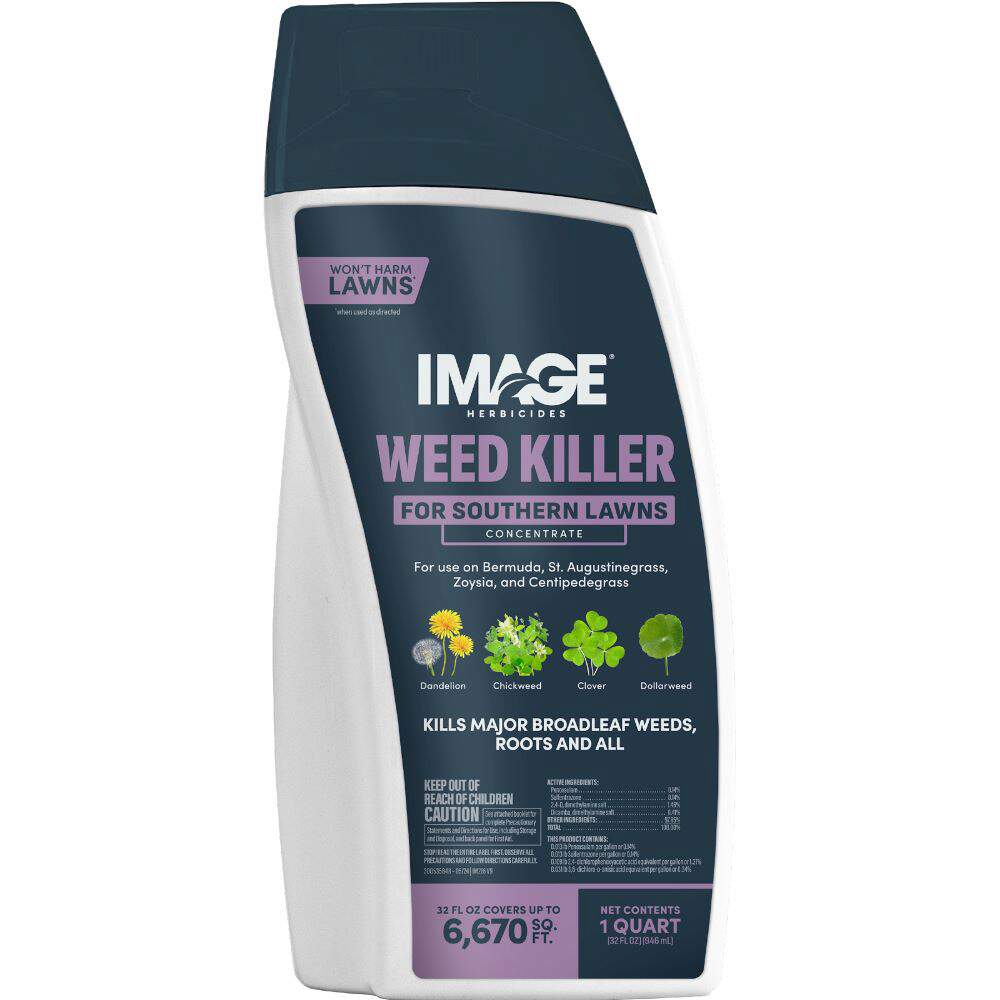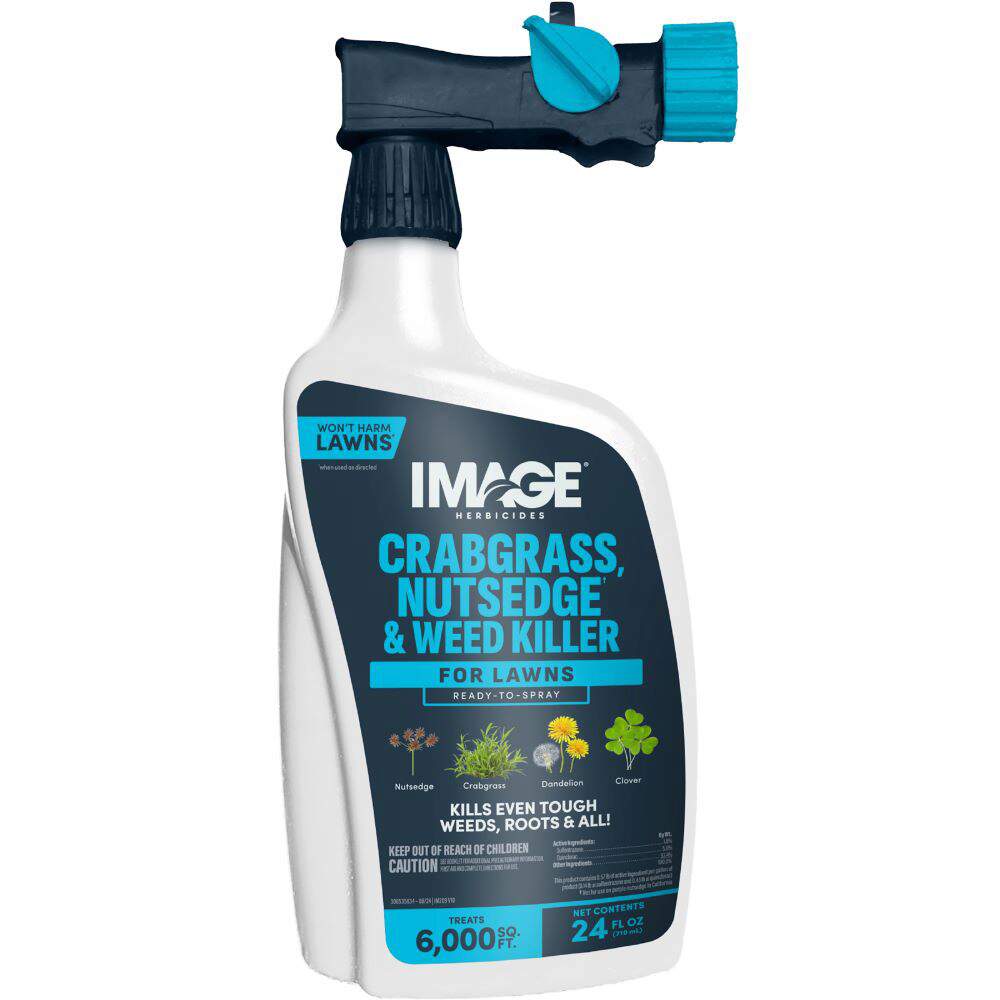HOW TO IDENTIFY CREEPING CHARLIE
Creeping Charlie is an aggressive perennial broadleaf weed that forms dense, low-growing mats of stems and leaves. The plant sends out runners that creep along the ground, spreading up to 7 feet in length. As they spread, the runners root at each leaf node, creating tiny new plants as they go.
Evergreen in moderate climates, creeping Charlie has rounded, 1-inch leaves with scalloped edges. Leaves sometimes carry a hint of purple-green. Prominent leaf veins start at a common point, where a short leaf stem connects to the leaf base. Small tubular, purple-blue blooms appear in small clusters alongside leaves for several months in spring.
Like all members of the mint family, creeping Charlie has four-sided stems. The weak stems may grow from 2 to 12 inches tall before bending back to the soil to root. All parts of the plant emit an odor when crushed, whether by hands, feet or mower blades.
Creeping Charlie is sometimes mistaken for speedwell and henbit. Henbit shares creeping Charlie's square, mint-family stems, but neither henbit nor speedwell creep and root.
WHERE AND WHY CREEPING CHARLIE GROWS
Creeping Charlie is common throughout the United States, except in the hot, arid Southwest. This aromatic weed adapts to wide-ranging soil types and conditions, but it prefers moist, rich soils. It thrives in full shade to full sun.
Creeping Charlie often invades poorly maintained lawns, where it easily outcompetes struggling turfgrass. This vigorous weed flourishes in moist, shady, low-lying areas with poor drainage and compacted soil. Correcting drainage and aerating soil can help reduce this weed's advantage.
HOW TO CONTROL CREEPING CHARLIE
When treating creeping Charlie or other lawn weeds, always read product labels thoroughly. Some lawn grasses are sensitive to herbicides, so make sure the label lists your grass type before applying products to your lawn. Only treat established lawn grasses, never newly seeded areas.
For best results, treat creeping Charlie when plants are young and small — before they start to creep and run. Image Herbicides offer several highly effective liquid products to kill or control creeping Charlie:
- Image Herbicides Crabgrass, Nutsedge & Weed Killer for Lawns, available in Ready-to-Spray and Concentrate versions, is a selective, post-emergent herbicide. It starts working on contact to kill creeping Charlie and other listed lawn weeds down to the root.
- Image Herbicides Crabgrass & Weed Killer for Lawns, available as Ready-to-Spray and Concentrate products, kills even the tough weeds — roots and all. For best results, apply this selective post-emergent herbicide when soil is moist and creeping Charlie is in active growth.
- Image Herbicides Weed Killer for Southern Lawns, available in Ready-to-Spray and Concentrate versions, starts working immediately to kill creeping Charlie down to the roots. This fast-acting herbicide formula delivers visible results in hours.
Creeping Charlie Control Tip: Creeping Charlie produces seeds, but its creeping stems are behind its persistent spread. Though its roots are fine and shallow, hand weeding can backfire. Even a small piece of stem left behind can root quickly and start the cycle again.
If you're looking for a granular option for post-emergent weed control, Pennington Full Season Weed & Feed 25-0-8 feeds your lawn and controls creeping Charlie, too.
Always read product labels thoroughly and follow instructions, including guidelines for lawn grasses, frequency of applications and seasonal maximums that may apply.
CREEPING CHARLIE GALLERY

Creeping Charlie Patch

Creeping Charlie Leaves and Flowers

Creeping Charlie Leaf

Creeping Charlie Stem

Creeping Charlie Seeds




